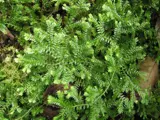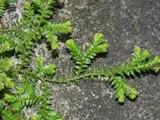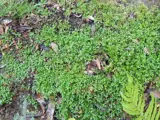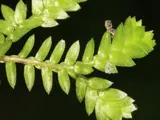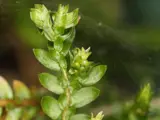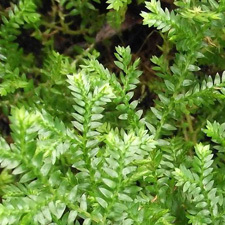 African club moss
African club moss
Common name: Selaginella
Botanical name: Selaginella kraussiana
Management programme: Sustained control - Rule 5a applies.
Originally from Southern and tropical Africa. Thought to have been brought to New Zealand as an ornamental plant. Recorded as naturalised by 1919.
Why is it a pest?
- Grows quickly and widely, and grows on ground or on the trunks of other plants.
- Tolerates hot or cold, and light to deep shade, but requires reasonably damp to wet substrate.
- This is a fast growing plant that inhibits the establishment of native plants.
Where is it found?
- It likes disturbed areas – forest margins, shrubland, stream banks, and fernland.
- Reproduces sexually by releasing spores. Spores are dispersed by wind, water, boots, feet, stock and machinery.
- Also reproduces vegetatively by creeping stems with roots. Stem fragments can be dispersed by soil and water movement as well as human activities.
- It is found throughout the Bay of Plenty in various habitats.
What does it look like?
- A small, fern groundcover with long, fine roots and creeping, slender, irregularly branched stems that root at nodes.
- Leaves (2-4mm) are in rows. Spore cones (10mm long) are rounded. Spores are thought to be viable for more than a year.
What are the rules?
Sustained control
Sustained Control pests are well established in the region and preventing the spread is no longer a realistic objective. Management focuses on reducing general impacts of the pest. Landowners/occupiers are responsible for the control of these pest species on their land. Council may enforce control.
Under rule 5a of the RPMP landowners/occupiers must destroy this pest if required by a written direction from an authorised person unless a property specific pest management agreement has been agreed and signed between the occupier and the Council.
Criteria to meet Rule 5A include when the species is being actively managed by council, other agency and or community group, on an adjacent property. See the Regional Pest Management Plan 2020-2030 rules for Sustained control pests for more information.
How do you get rid of it?
- Pull out very small areas. Dispose of at a refuse transfer station, burn or bury deeply.
- Cover with black polythene or Weedmat for 3-6 months.
- Foliage spray.
Follow up will be required every three months.
CAUTION: When using any herbicide or pesticide, PLEASE READ THE LABEL THOROUGHLY to ensure that all instructions and directions for the purchase, use and storage of the product, are followed and adhered to.
Read more on pest control advice, information and regulations
Images

